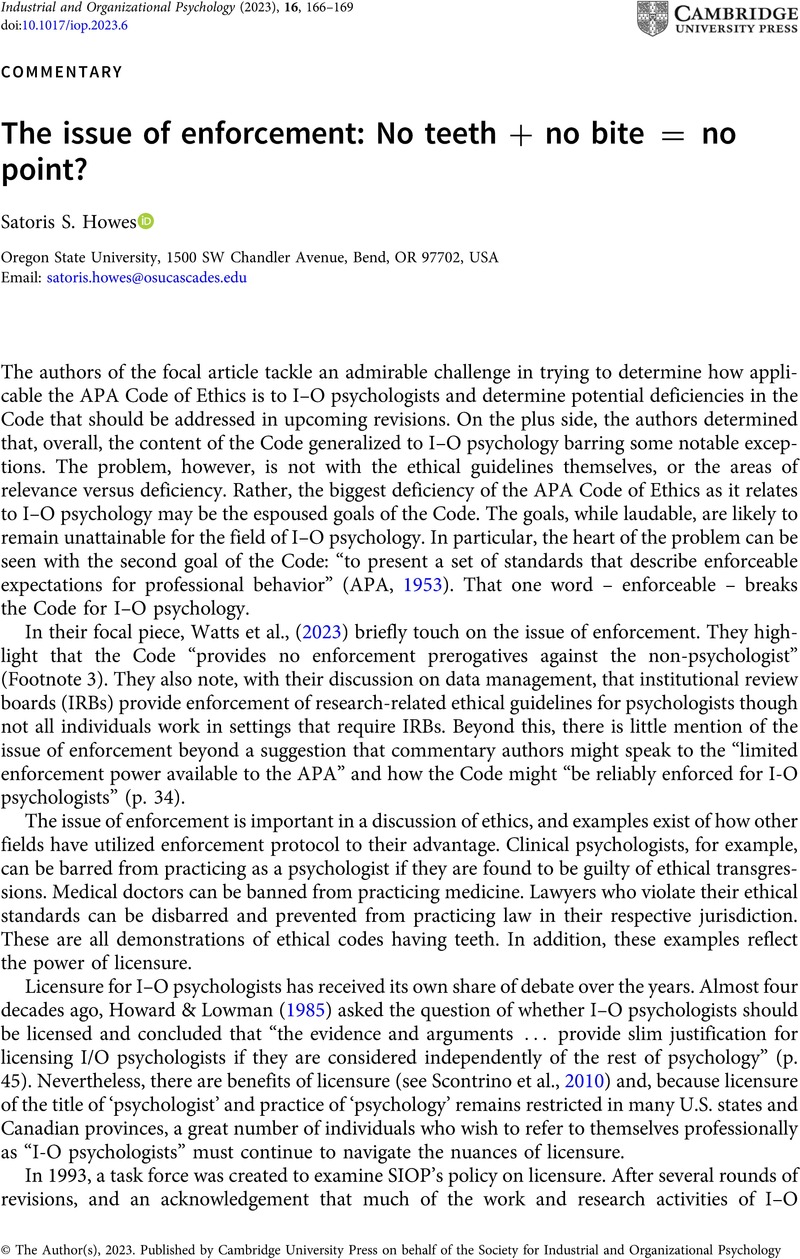No CrossRef data available.
Article contents
The issue of enforcement: No teeth + no bite = no point?
Published online by Cambridge University Press: 09 May 2023
Abstract
An abstract is not available for this content so a preview has been provided. Please use the Get access link above for information on how to access this content.

- Type
- Commentaries
- Information
- Copyright
- © The Author(s), 2023. Published by Cambridge University Press on behalf of the Society for Industrial and Organizational Psychology
References
American Psychological Association (APA). (1953). Ethical standards of psychologists. APA.Google Scholar
Campion, M. (1996). SIOP’s policy on licensure. The Industrial-Organizational Psychologist, 34(1), 16–21.Google Scholar
Howard, A., & Lowman, R. L. (1985). Should industrial/organizational psychologists be licensed? American Psychologist, 40(1), 40–47. https://doi.org/10.1037/0003-066X.40.1.40
CrossRefGoogle Scholar
Jacobs, J. A., Dunn, A., Judish, J. E., Murphy, D. C., & Panosyan, L. (2018). Can association membership be tied to professional certification? Retrieved from https://www.pillsburylaw.com/en/news-and-insights/can-association-membership-be-tied-to-professional-certification.html
Google Scholar
Scontrino, M. P., Gormanous, G., & Blanton, J. S. (2010). A guide for I-O students (and faculty) about licensure. The Industrial-Organizational Psychologist, 47(3), 11–15.Google Scholar
Society for Industrial and Organizational Psychology (SIOP). (n.d.). Licensure for I-O psychologists. Retrieved from https://www.siop.org/Membership/Licensure-Policy-by-State
Google Scholar
Talone et al v. The American Osteopathic Association. (2018) No. 1:2016cv04644 - Document 109 (D.N.J. 2018) https://law.justia.com/cases/federal/district-courts/new-jersey/njdce/1:2016cv04644/335951/109/
Google Scholar
Watts, L. L., Lefkowitz, J., Gonzalez, M. F., & Nandi, S. (2023). How relevant is the APA ethics code to industrial-organizational psychology? Applicability, deficiencies, and recommendations. Industrial and Organizational Psychology: Perspectives on Science and Practice, 16(2), 166–169.Google Scholar


